Huskies often have a serious expression due to their facial markings, not necessarily because they are angry.
| Facial Markings | Huskies often have unique facial markings that may resemble a mask or frown lines. |
| Eye Shape | The almond shape of a Huskys eyes can give the appearance of a stern expression. |
| Breed Characteristic | Huskies breed characteristics include a wolf-like appearance that can seem intimidating. |
| Eye Color Variation | Huskies can have blue, brown, or even heterochromia eyes, which can add to the intense look. |
| Position of Ears | Their typically erect and forward-facing ears can also give off an alert and intense vibe. |
| Communication Style | Huskies use facial expressions heavily for communication, which can be mistaken for anger by humans. |
| Misinterpretation by Humans | Humans tend to anthropomorphize animal expressions, interpreting them using human emotions. |
| Breed Temperament | Despite their looks, Huskies generally have a friendly and good-natured temperament. |
| Threat Display | A true Husky threat display includes more than just facial expression, such as raised hackles and an aggressive stance. |
| Training | Proper training and socialization can reduce the likelihood of a Husky showing aggressive behavior. |
Why do huskies look angry
Huskies have inherent biological traits that contribute to their stern appearance, often mistaken as anger. The distinctive fur patterns, eye shapes, and ear positioning play a significant role in shaping their facial expressions.
The Husky’s fur markings, particularly their facial mask, can create the illusion of furrowed brows, giving the impression of a frown or scowl. Their almond-shaped eyes, while delivering a striking and intense gaze, also contribute to the intense expression Huskies are known for.
Additionally, their erect and pointed ears add to the overall perception of alertness and seriousness. These biological traits come together to give Huskies a naturally intense and focused appearance, which can be misunderstood as anger by those unfamiliar with the breed..
Understanding the biological traits of Huskies not only demystifies their aloof appearance but also enhances our capacity to care for them effectively. For insights into one of the breed’s most challenging behaviors and strategies to ensure their safety, explore our detailed guide on preventing Huskies from running away.
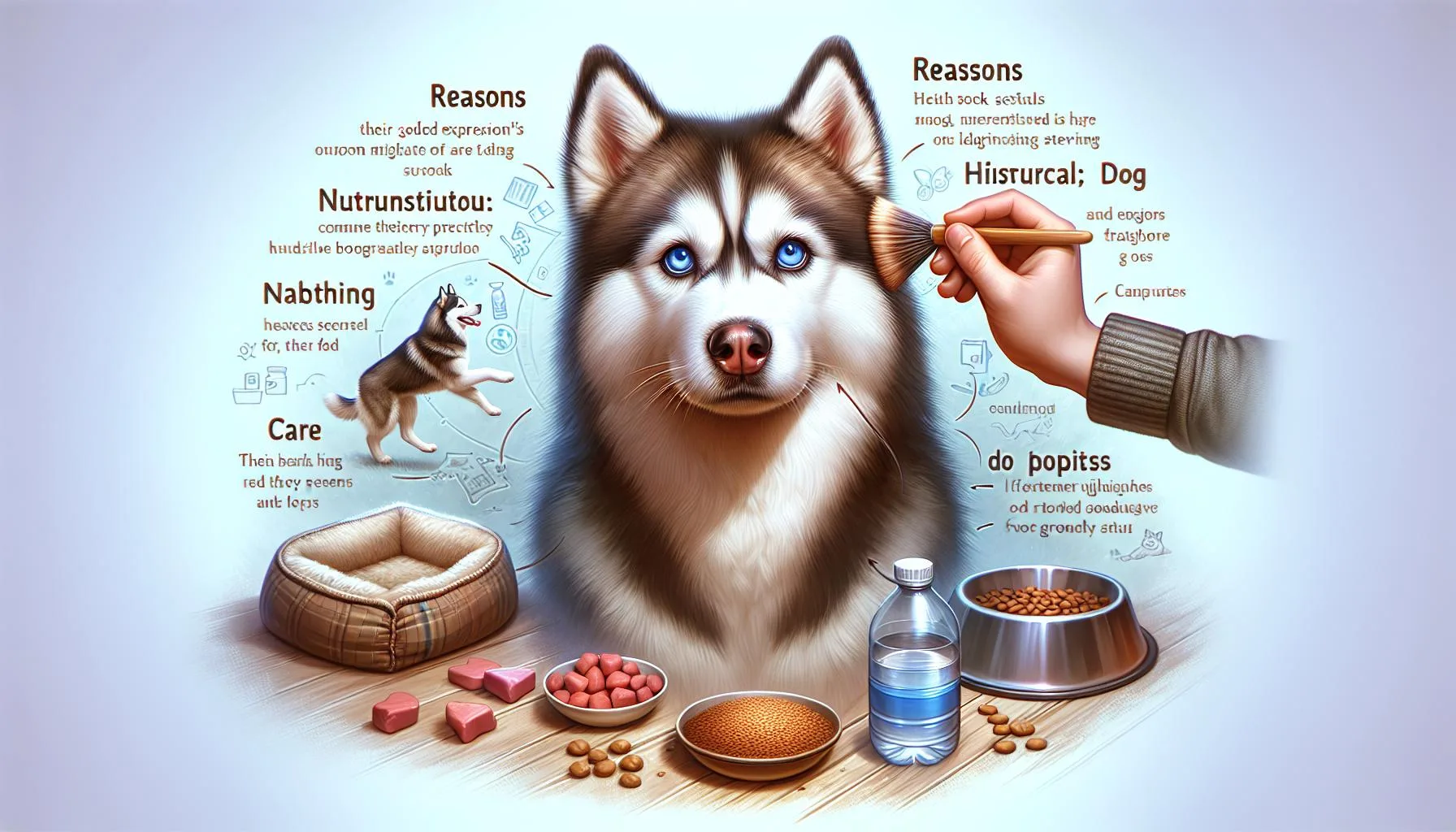
The Role of Genetics in Husky Expressions
Huskies have inherited distinctive facial features and expressions from their genetic makeup. The genetic background of the breed plays a significant role in shaping their facial structures, which consequently influence their overall expressions.
Huskies’ genetics contribute to their intense gaze, often mistakenly perceived as anger. The genes determine traits such as eye color, shape, and vivid facial markings, all of which collectively give Huskies their unique and stern appearance.
Additionally, the positioning and shape of their ears, inherited from their genetic lineage, further contribute to their characteristic expression. Understanding the genetic underpinnings of Husky expressions helps owners appreciate the inherent traits that contribute to their pet’s distinctive appearance.
Why do huskies look angry
Overall, the genetic background of Huskies significantly influences their facial structures and expressions, giving rise to their intense and often misunderstood appearance.
Their distinct traits inherited from their genetic lineage contribute to the unique and sometimes stern expressions that are misunderstood as anger.
For a deeper understanding of your Husky's unique features and how to maintain their well-being, discover expert guidance on ear care. Delve into the full article, "Caring for Your Husky's Ears: A Comprehensive Guide", to ensure your canine companion stays as healthy and expressive as ever.
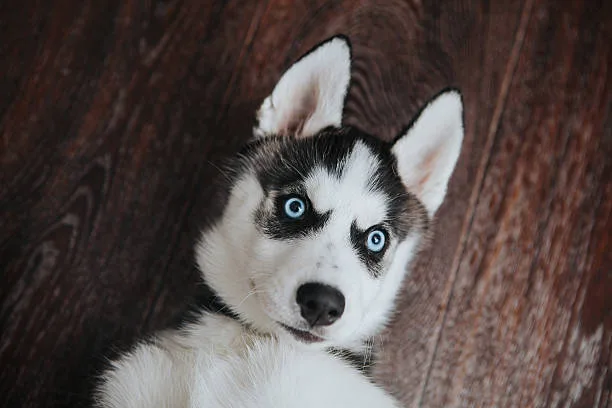
Facial Markings and Misinterpretations
Why do huskies look angry
Huskies are recognized for their striking facial markings, including their piercing eyes and distinctive facial patterns. These unique features can often lead to misinterpretations of a Husky’s mood and intentions by humans.
The combination of facial fur patterns, eye shapes, and the positioning of their ears can give the appearance of a stern or intense expression, which is frequently misunderstood as anger or hostility by observers. It’s important to understand that these facial markings are a natural part of the breed’s appearance and do not necessarily reflect the dog’s actual emotional state.
Therefore, it’s crucial for owners and individuals interacting with Huskies to recognize that their facial markings may not accurately convey their true feelings, and to look for additional cues to understand a Husky’s actual mood. This misinterpretation highlights the significance of taking the dog’s entire body language into account when assessing its emotional state, rather than solely relying on its facial expressions..
Understanding the unique communication cues of Huskies is just as important as maintaining their striking appearance. Discover essential grooming tips to help your Husky retain their stunning looks throughout the winter months by reading our feature, "How to Maintain Your Husky's Coat During the Winter."
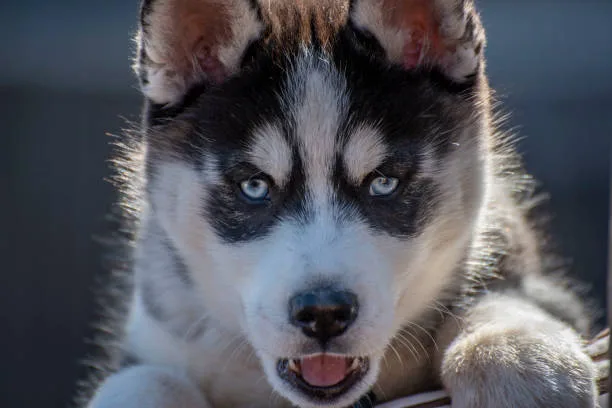
Differentiating Aggression from Calmness in Huskies
Huskies are known for their intense and stern facial expressions, often leading to misconceptions about their mood. However, it’s essential to understand that a Husky’s resting face might appear angry, but it doesn’t necessarily mean that the dog is in an aggressive state.
To differentiate between aggression and calmness in Huskies, pay attention to their overall body language. An aggressive Husky may display tense body posture, raised fur, and a fixed stare, while a calm Husky will have a relaxed body, soft eyes, and possibly even a wagging tail.
It’s crucial to observe the context in which the facial expression is presented; for example, during playtime or relaxation, a Husky’s stern expression may simply be their default look rather than a sign of aggression. Understanding these cues can help Husky owners accurately gauge their pet’s emotional state without misinterpreting their expressions.
Moreover, consider the environment and the dog’s history. A Husky exhibiting aggressive behavior may have their ears flattened, a closed mouth, and a tense jaw.
Conversely, a calm Husky’s ears may be upright, with a more open and relaxed facial expression. These subtle cues, when observed in conjunction with the dog’s resting facial expression, can assist in differentiating between a genuinely angry Husky and one that is simply maintaining a stern but calm appearance.
To further safeguard the well-being of your beloved pet, understanding their health status is crucial. Discover the signs of pregnancy in your Husky and secure her health by reading our comprehensive guide on identifying pregnancy in Huskies.
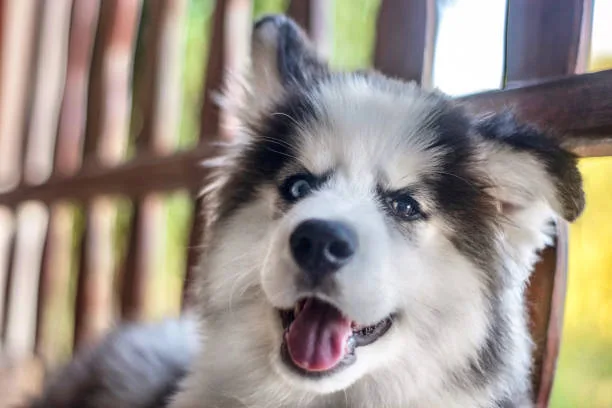
The Impact of Husky Eyebrows and Mask
Huskies have distinctive facial markings that contribute to their intense and stern appearance, often leading to the mistaken assumption that they are angry. The unique facial mask and eyebrows found on Huskies play a significant role in shaping their expressions.
The facial mask, which is a darker coloration around the eyes and muzzle, gives the impression of an intensified gaze, adding to the serious look of the Husky. This feature is often misinterpreted as anger when in reality, it is simply a natural part of their appearance. Additionally, the eyebrow-like markings above their eyes create an illusion of frowning or scowling, further contributing to their seemingly angry expression.
However, it’s essential to understand that these facial markings are characteristic of the breed and do not necessarily reflect the dog’s emotional state. While these unique facial features may give off an angry or intense vibe, it’s crucial for owners and observers to recognize that they are simply a part of the Husky’s natural appearance.
Acknowledging these distinct facial characteristics can help promote a better understanding of the Husky’s true emotions and prevent misinterpretations based solely on their facial markings..
To further understand the behavioral traits associated with Siberian Huskies and explore effective training methods, delve into our comprehensive guide on calming these energetic canines. Gain insights on positive reinforcement techniques by reading effective training strategies for your Husky's serene demeanor.
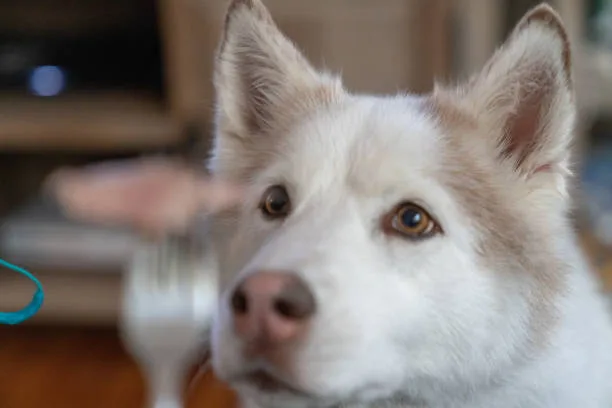
Interpreting Husky Body Language
On Medium about: Why do huskies look angry
Interpreting a Husky’s body language is crucial in understanding their emotions. Along with their facial expressions, their posture, tail position, and ear movement can provide valuable insights into their state of mind.
A raised tail and perked ears often indicate alertness or excitement, while a lowered tail and flattened ears may suggest fear or submission. Observing these cues in conjunction with their facial expressions allows for a more accurate interpretation of a Husky’s emotions.
To deepen your understanding of Husky behavior and connect on a more intuitive level, explore our comprehensive guide on interpreting their subtle signals. Delve into the intricacies that define these majestic canines and uncover more at your guide to the value of a red Husky.
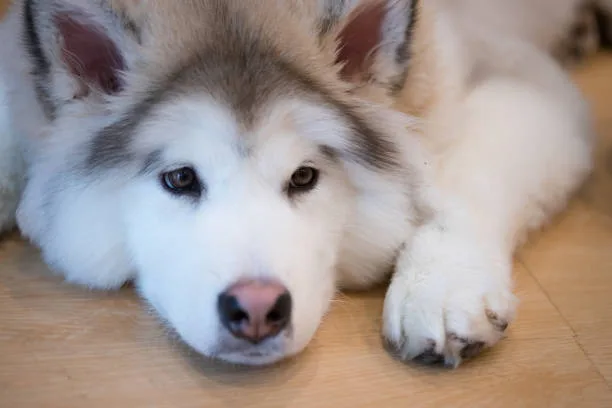
The Influence of Socialization on Husky Expressions
Proper socialization plays a critical role in shaping the expressions and body language of Huskies. When introduced to various environments, people, and other animals from a young age, Huskies learn to feel comfortable and at ease in different situations.
This exposure helps them develop a more relaxed and approachable demeanor, leading to friendlier facial expressions and body language.
Socialization also helps reduce anxiety and fear-based reactions, contributing to a Husky’s overall emotional well-being.
By being well-socialized, Huskies are less likely to appear angry or defensive in unfamiliar or stimulating situations, enhancing their interactions with humans and other pets.
When Huskies are adequately socialized, they tend to exhibit more open and welcoming facial expressions, making it easier for individuals to understand and connect with them. This level of socialization also promotes positive interactions and facilitates smoother integration into various social settings or activities.
- Early Exposure: Early and consistent socialization can significantly impact a Husky’s emotional development, leading to a more balanced and approachable temperament.
- Positive Reinforcement: Encouraging positive experiences during socialization can help Huskies associate different encounters with a sense of security and comfort, ultimately reflecting in their expressions and body language.
- Interactive Learning: Through socialization, Huskies learn to interpret and respond to social cues, resulting in softer and more amiable facial expressions that convey confidence and ease.
American Kennel Club: Why do huskies look angry
Ultimately, the influence of socialization on Husky expressions underscores the significance of early, diverse, and consistent exposure to various stimuli for fostering a friendly and approachable demeanor in these remarkable companions.
Delving further into the well-being of your Husky, identifying the reasons behind unpleasant odors is crucial. Explore our expert care strategies by reading the article "Understanding and Eliminating Husky Odor" at Understanding and Eliminating Husky Odor.
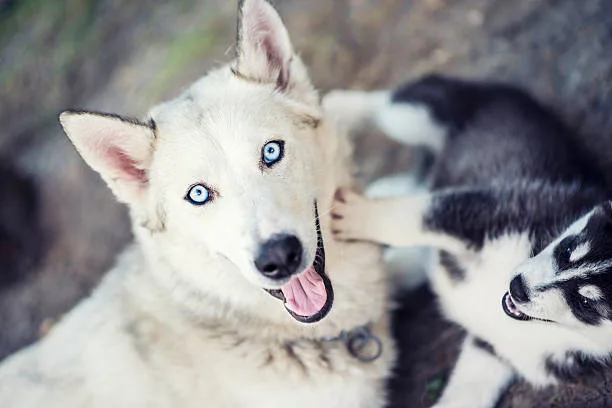
Do Huskies Smile? Understanding Positive Expressions
Huskies are known for their expressive and charming personalities, and while they may not smile in the same way humans do, they definitely have their own unique ways of showing happiness and affection. When it comes to positive expressions, Huskies often exhibit bright and alert eyes, relaxed ears, and a playful body language.
These are all signs that they are content and experiencing joy.
One of the most endearing ways Huskies express happiness is through their vocalizations – they may produce happy yips, chirps, or even howls that are distinct from their usual vocalizations. Additionally, their wagging tails, especially when accompanied by a relaxed posture, indicate a sense of contentment and delight.
Reddit Why do huskies look angry
Understanding these positive expressions is crucial for Husky owners, as it allows for a deeper connection and better communication with their pets.
By recognizing and acknowledging these signals, owners can foster a stronger bond with their Huskies and provide an environment where their pets feel understood and cherished.
To delve deeper into understanding your husky's health and well-being, discover vital insights on addressing digestive issues they may face. Explore our comprehensive guide, "Understanding Your Husky's Digestive Health: Steps to Take for Watery Stool", for helpful advice and caring solutions.
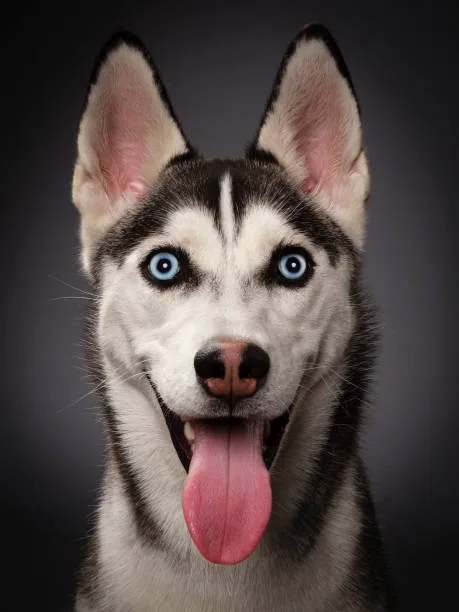
Training and Behavior: Encouraging Pleasant Expressions
Training and behavior play a crucial role in influencing the expressions of Huskies. By using positive reinforcement techniques, such as offering treats and praises when the Husky displays a relaxed or happy expression, owners can encourage pleasant facial expressions.
Consistency is key in this process, as regular training sessions can help the Husky associate certain commands or actions with positive outcomes, thereby promoting a more content demeanor.
It’s important for owners to understand that Huskies thrive on social interaction and mental stimulation. Engaging them in activities they enjoy, such as outdoor adventures or interactive play, can positively impact their overall mood and subsequently their facial expressions.
Additionally, teaching them commands like “sit” or “stay” can help manage their excitement levels and prevent them from appearing overly intense or stern.
On Quora about: Why do huskies look angry
Another effective method involves redirecting their attention when they exhibit signs of agitation or irritation. By introducing a favorite toy or engaging them in an activity they love, owners can shift their focus from negative emotions to a more positive state, thereby influencing their expressions.
Through patience, consistent training, and a deep understanding of their needs, owners can effectively encourage Huskies to exhibit more pleasant and less ‘angry’ expressions.
For those considering adding another pet to their household, exploring the companionship of a ferret could be an intriguing next step. Discover a seamless journey to ferret adoption and joyful ownership by accessing our comprehensive guide, Your Easy Guide to Happy Ferret Ownership.
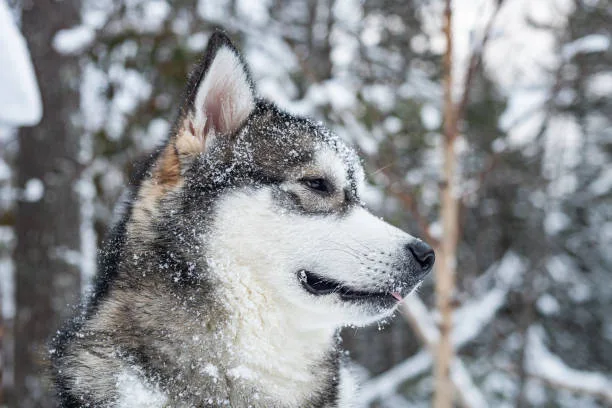
The Significance of Exercise and Playtime
Huskies are energetic and active dogs that require ample exercise and playtime to maintain their physical and mental well-being. Regular exercise not only keeps them physically fit but also contributes to their overall emotional state, impacting their facial expressions and body language.
When huskies do not receive enough exercise and playtime, they can become restless, anxious, and may exhibit stress-related behaviors.
Playtime, especially interactive play with their owners, provides huskies with mental stimulation, a sense of companionship, and an outlet for their abundant energy.
This engagement and activity can help alleviate any tension or pent-up energy that may contribute to the appearance of anger or irritability. Moreover, the satisfaction derived from engaging in physical activities and play can translate into more relaxed and content facial features, positively affecting their overall demeanor.
It is essential for husky owners to invest time and effort in providing regular exercise and engaging play sessions to ensure that their husky’s emotional and physical needs are met.
By prioritizing exercise and playtime, owners can help their huskies display more relaxed and content facial features, reflecting their improved emotional well-being.
Ensuring your Husky receives adequate exercise will not only contribute to their overall health but also to their emotional well-being, reflected in their joyful expressions. To discover equally fascinating insights into the behavior of another magnificent creature of the Arctic, delve into our engaging article, Exploring Polar Bear Hibernation Myths and Facts.
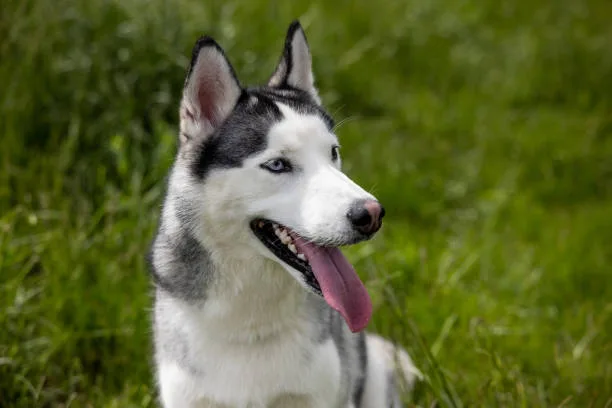
Health Issues That Might Affect Husky Expressions
Health issues such as dental pain or vision problems can significantly impact a Husky’s facial expressions and overall demeanor. Just like humans, Huskies can experience discomfort or irritation due to dental issues, which may lead to a perpetually stern or ‘angry’ expression.
Similarly, vision problems can cause squinting or furrowing of the brows, giving the impression of a displeased or irritable appearance. These underlying health issues might not only affect the Husky’s physical well-being but also contribute to their perceived emotional state, making it vital for owners to be vigilant about their pet’s healthcare.
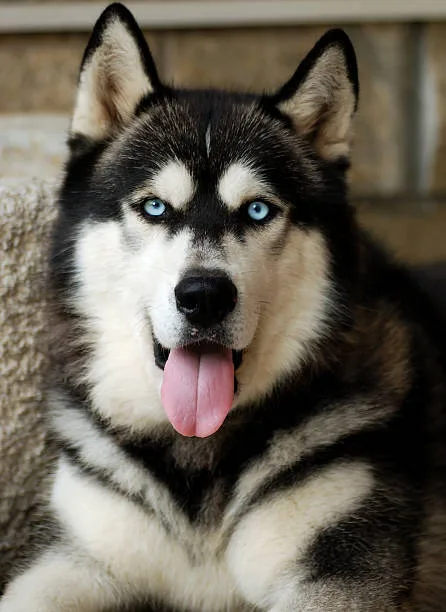
Responsible Husky Ownership and Understanding Canine Emotions
Owning a Husky comes with the responsibility of understanding their emotions and expressions. It’s crucial for owners to recognize that Huskies might look angry due to their facial features, but it doesn’t necessarily reflect their mood.
This understanding can prevent misinterpretations and lead to better care for the pet. By being aware of the breed’s facial markings, such as the mask-like patterns, and their body language, owners can accurately gauge their Husky’s emotions.
Proper socialization plays a significant role in shaping a Husky’s expressions, highlighting the importance of early and continuous exposure to different environments, people, and animals. Additionally, ongoing training and positive reinforcement can encourage more pleasant expressions, reflecting a Husky’s actual emotions.
Ultimately, responsible Husky ownership involves a commitment to learning and interpreting the unique cues and expressions of this remarkable breed. Husky owners hold the key to fostering an environment where these beautiful dogs can thrive emotionally..

Decoding Subtle Cues in Husky Communication
Huskies are known for their unique ways of communication, which involve a combination of vocalizations and body language. They use a range of subtle cues to express their emotional states and desires.
Whether it’s a low howl, gentle whine, or expressive posture, each signal carries meaning that is essential for owners to understand. By paying attention to these cues, you can enhance your communication with your Husky and strengthen your bond. Huskies have a distinct vocal range, from melodious howls to soft whimpers, each serving a communication purpose.
Understanding the nuances in their vocalizations can provide insights into their emotional states and needs. In addition to their vocal expressions, Huskies also rely on their body language to convey their feelings and desires.
They may use specific postures, such as standing tall with ears perked up or crouching low with a relaxed tail, to communicate various messages. Interpreting these cues requires attentive observation and an understanding of the Husky’s individual personality. By recognizing and responding to their subtle vocalizations and body language, owners can effectively cater to their Husky’s needs and ensure a harmonious relationship. To decode these communication cues effectively, it’s essential to spend quality time with your Husky, observing and learning their unique ways of expressing themselves.
This attentive approach strengthens the bond between owners and their pets, fostering an environment of mutual understanding and trust. In summary, acknowledging the intricate vocalizations and body language of Huskies is crucial for successful owner-pet communication. By becoming adept at recognizing and interpreting these subtle cues, owners can effectively address the emotional states and desires of their Huskies, ultimately enriching the relationship between them..
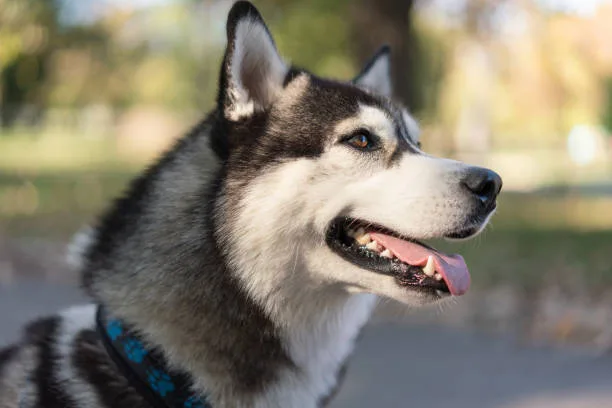
Nurturing a Strong Relationship with Your Husky
To nurture a strong relationship with your Husky, it’s essential to focus on consistent training, positive reinforcement, and regular affection and attention. Huskies thrive on structure and will respond well to consistent training methods.
Incorporating positive reinforcement techniques such as treats, praise, and playtime will further strengthen the bond between you and your Husky. Regular affection and attention are crucial to address the breed’s need for companionship.
Engaging in bonding activities like daily walks, interactive play, and grooming sessions can significantly enhance the bond between you and your Husky. Remember, Huskies are social animals and require regular social interaction to thrive emotionally and mentally.
Consistent training methods are essential for nurturing a strong bond with your Husky.
Positive reinforcement techniques, such as treats, praise, and playtime, can further enhance the relationship.
Regular affection and attention are crucial to address the breed’s need for companionship. Engaging in bonding activities like daily walks, interactive play, and grooming sessions can significantly strengthen the bond.
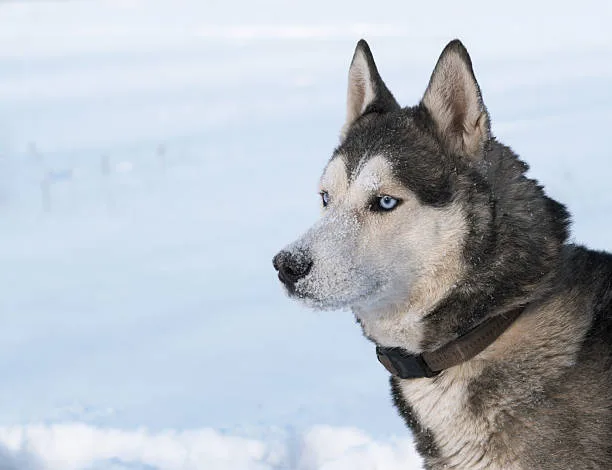
Husky Healthcare and Behavioral Observations
Huskies are generally a healthy breed, but they are susceptible to certain health issues that can impact their behavior and expressions. It’s important for Husky owners to be aware of these common conditions in order to provide the best care for their pets.
One of the key issues that can affect a Husky’s behavior is hip dysplasia, a genetic condition that causes the hip joint to develop abnormally. This can lead to discomfort and difficulty in movement, which may manifest as irritability or restlessness in the dog.
Additionally, eye problems such as cataracts or corneal dystrophy are relatively common in Huskies and can cause them to squint or appear more guarded, contributing to their ‘angry’ look. Early detection of these health issues is crucial, as timely intervention can prevent or alleviate the associated discomfort and behavioral changes. Regular vet check-ups, especially focusing on genetic predispositions, can aid in the early identification of these conditions.
Preventive care such as proper nutrition, regular exercise, and weight management can also play a significant role in maintaining a Husky’s overall health and well-being, subsequently positively impacting their behavior and expressions. By addressing potential health issues proactively, owners can ensure that their Huskies maintain a happy and content disposition, and minimize any misconceptions about their mood or intentions..
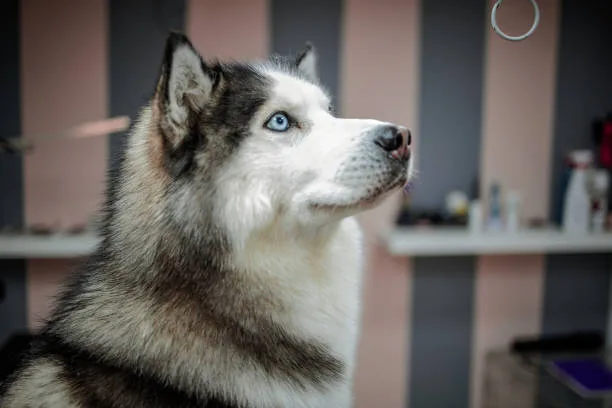
Activating the Husky Mind: Enrichment and Exercise
Huskies are known for their high energy levels and need for both physical and mental stimulation. Engaging in activities that challenge their minds as well as their bodies is essential to keeping them happy and healthy.
Providing enrichment through interactive toys, puzzle feeders, and obedience training can help satisfy their need for mental stimulation. Additionally, incorporating activities such as agility training, fetch, and hiking into their exercise routine can ensure that their physical energy is properly channeled.
This not only promotes their overall well-being but also helps prevent boredom-induced anxiety and destructive behaviors. Consistent engagement in both physical and mental challenges allows Huskies to lead fulfilling lives while maintaining a healthy and balanced demeanor.
With proper enrichment and exercise, Huskies can thrive and avoid displaying signs of restlessness or agitation..

Leave a Reply